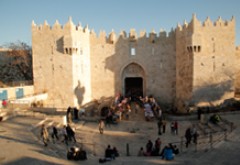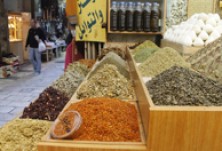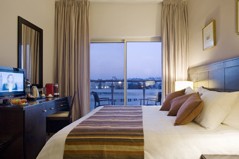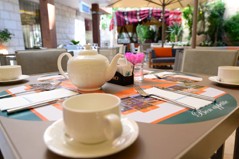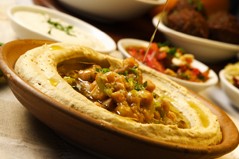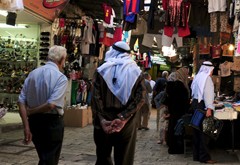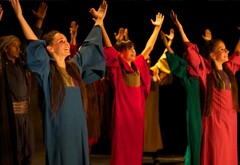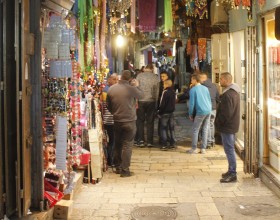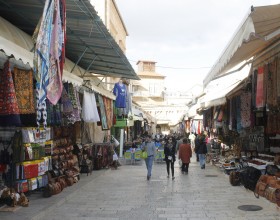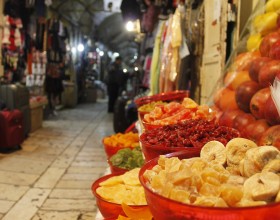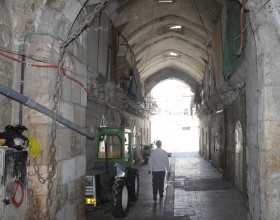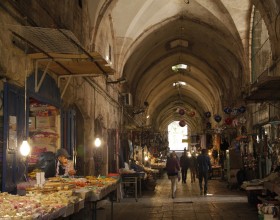Paths And Trails
Suqs and Bazaars
Jerusalem is the city of trade, handicrafts, and souvenirs. Hence, its markets have occupied the central axes, with shops and stores numbering in the thousands. Throughout the ages, it has traded in various goods and commodities. Most of its markets are covered with barrel vaults, giving a special flavor of enjoyment to shopping.
Trail’s Character and Stations
This trail focuses on traditional and contemporary economic and commercial life in the Old City of Jerusalem, highlighting architectural monuments related to commercial activities, such as the Khans and the Bazaars, as well as describing the current effects of occupation on the city’s markets and industries. It is an enjoyable trail, but requires perseverance and tolerance, given that most Suqs are narrow alleys that are crowded with peddler stands and frequented by many small carts. It is difficult to plan this walk for large groups or children, as they may scatter if the call for shopping takes over their better judgment. Despite these precautions, Suqs exhibit daily social activity, portraying memories, historical flavors, oriental variety, and an uniqueness rarely found in other places. One cannot but mention Jerusalem’s famous sesame bread (Ka’ak bsumsum), Zalatimo’s sweet pastry (Mutabbaq), Ja’far’s cheese pastry (Knafeh), al-‘Amad’s dense sweet confection, halva (Halaweh), Abu Shukri’s hummus, coffee and tea in Suq al-Qattanin, lounging in al-Dabbagha and Aftimos Suq, and the spices of Suq al-Attarin. It is recommended to start the trail at the northern end of Suq Khan al-Zait and conclude it at Suq al-Qattanin near al-Aqsa Mosque. In other words, this trail is concentrated in the heart and center of the Old City.
The trail requires 3 – 4 hours, depending on the pace of sightseers. Its stations are:
1- Suq Khan al-Zait
2- Suq Aftimos and Al-Dabbagha
3- The Bazaar and Suwaikat al-Husur (Straw Mats)
4- The Three Suqs’ Roofs
5- Suqs of Lahhamin (Butchers), ‘Attarin (Spice traders) and Khawajat (well-off people and foreigners)
6- Khan al-Sultan
7- Suq Al-Qattanin
Introduction
Islamic cities in the middle ages were characterized by a number of prominent features, particularly the presence of one or more major Suqs (markets). Cairo is famous for Khan al-Khalili; Damascus for Suq al-Hamidiyya; Baghdad for Suq al-Safafir (coppersmiths), and Istanbul for Suq al-Masri.
Old and Numerous Suqs of Jerusalem
As for Jerusalem, it is famous for a number of Suqs, some of which were mentioned by early historians and travelers. Nasir Khusrau, a Persian and Tajik poet, philosopher, Isma’ili scholar, traveler and one of the greatest writers in Persian literature, described Jerusalem as having ‘beautiful Suqs, high buildings and many artisans, with each group having its own Suq.’
In truth, the Suqs of Jerusalem are old, but have been continuously rejuvenated as a result of uninterrupted habitation in the city. Mujir al-Din , a Jerusalemite qadi (judge) and Palestinian historian who chronicled the history of Jerusalem and Hebron in the Middle Ages (al-Uns al-Jalil fi-tarikh al-Quds wal-Khalil - ‘The Glorious History of Jerusalem and Hebron’) explains that Salameh Ibn Qaisar recounted the story of Umar Ibn al-Khattab, who upon conquering Jerusalem, reorganized its Suqs, particularly the three major Suqs. According to Mujir al-Din: ‘…[in] the three existing Suqs… antiquity is now gone… replaced by contemporary urban development.’
Examples of the Suqs of the Old City
Most Jerusalem Suqs were named, as was customary in Arab Islamic cities, after the goods sold or made in them. Mujir al-Din listed the City’s most famous Suqs as the Middle Suq, Suq al-Bazzazin (silk market), Suq al-Tujjar (traders), Suq al-Haririyah (silk), Suq al-Khudar (vegetables), Suq al-Zait (oil), Suq al-Sagha (goldsmiths), Suq aAl-Tabbakheen (Chefs’ Market), Suq Al-Fakhr (specialized in making soap), Suq al-Qashash, Suq Khan al-Fahm (charcoal), Suq al-Qattanin (cotton traders), Suq al-Qumash (cloth), Suq al-Mubaydin (copper whitewashers), Suq al-Ma’rifa (knowledge), and the Grand Suq (which comprises the three Suqs, al-Attarin, al-Lahhamin, and al-Khawajat, specializing in cloth and garments). In addition, there are Suq al-‘Utour (fragrances), Suq al-Dukhaniyya (tobacco), and Suq al-Khazaf (ceramics). There are also smaller markets, referred to as Suwaikat (small Suq), such as Bab-Hutta and Bab-al-Qattanin. Aref al-Aref, a Palestinian journalist, historian and politician who served as mayor of East Jerusalem? in the 1950s during Jordanian rule, itemized the city’s Suqs in the early 1950’s, adding Suwayket ‘Alloun near Jaffa Gate, Suq Al-Bazaar, Suq Al-Nahhaseen (coppersmiths), Suq al-Bashura, Suq Bab al-Silsilah, Suq Bab Hutta, Suq Bab al-Jadid (New Gate), Suq Aftimos, Suq Harat al-Nasara (Christian Quarter), and Suq Bab al-Khalil (Jaffa Gate).
History of the Jerusalem Suqs
The history of these Suqs goes back to many historical periods, some as far as Roman times, others to the era of the Franks. But the clearest and most comprehensive period to which Jerusalem Suqs are attributed are the Ayyubids, Mamluks and Ottomans. Commercial activity in Jerusalem was concentrated in a number of important facilities, named throughout the historical eras as khans, bazaars, Qaisariyya, and wakala (agency). These facilities were dispersed throughout the city’s streets and alleys, with each street divided into a number of Suqs, large or small, with the small ones called ‘suwaykas.’
‘In Activity there is Blessing’
These Suqs were the heart of the city, throbbing with commercial and social activity. They continue to be active, hampered on holidays by severe over-crowding, and by competition over the small area of the Suq between store owners, peddler stands, and shoppers. Although most of these Suqs are paved and tiled, they are generally narrow and somewhat dark, even during the day, such as Suq Bab al-Silsila near Khan al-Sultan.

